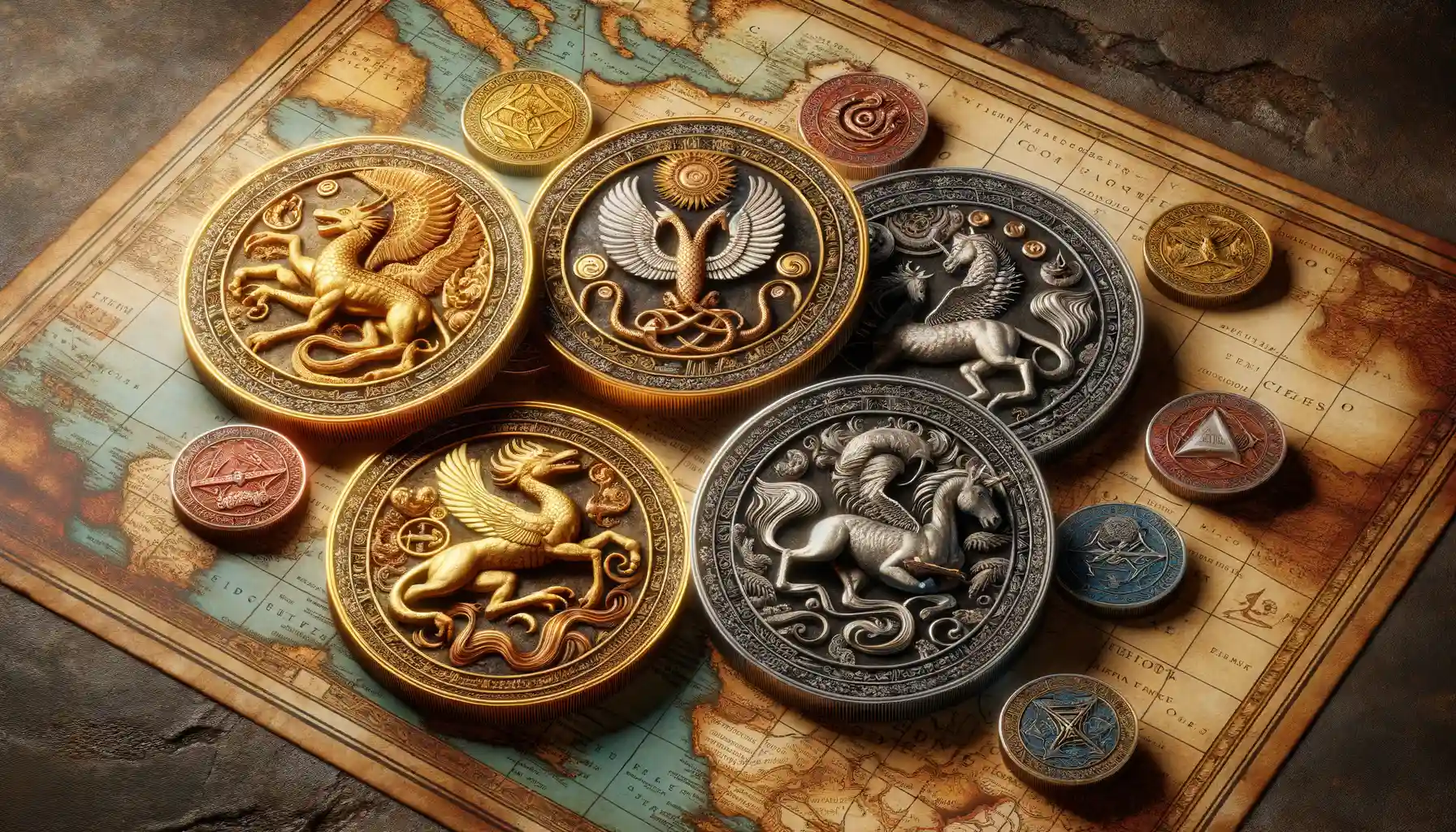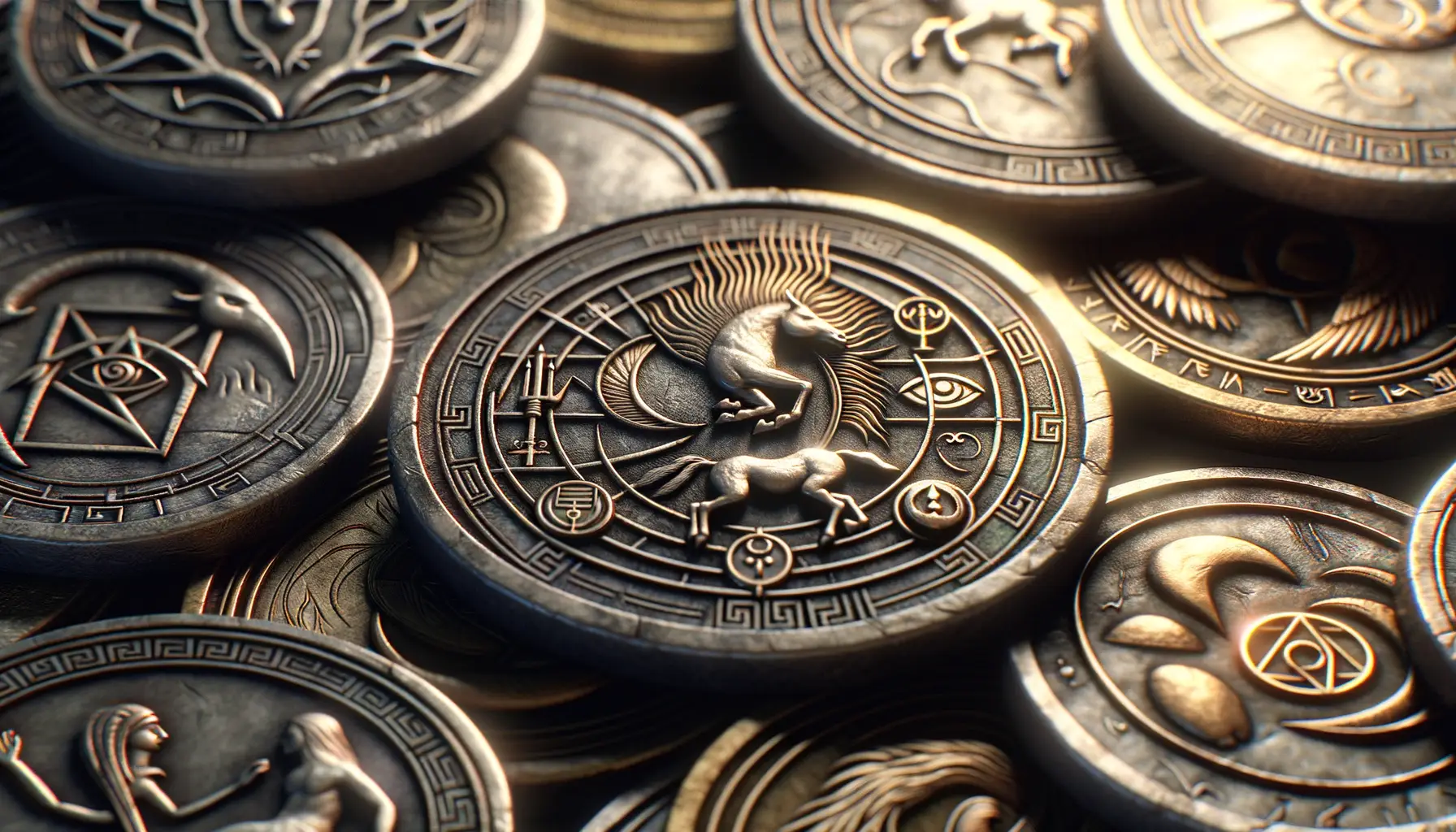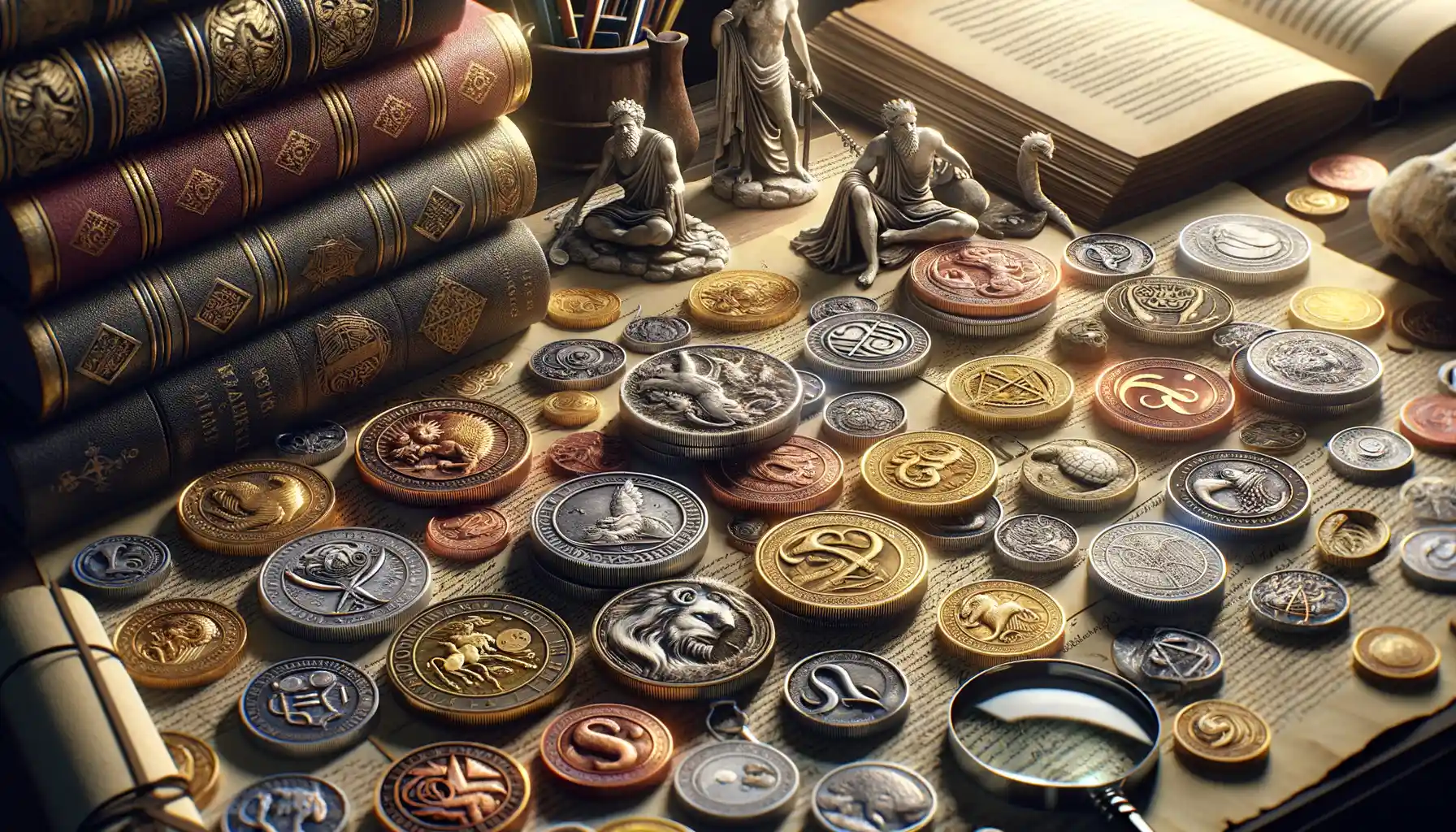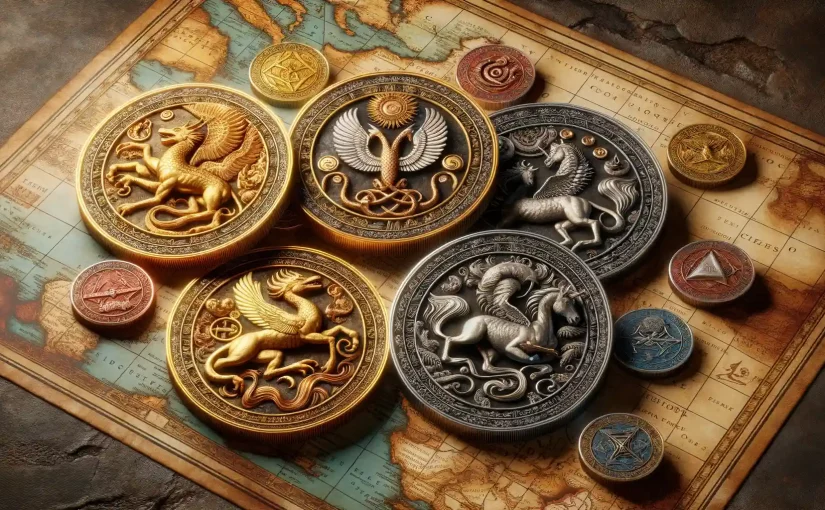Introduction to Ancient Coin Mythology
Imagine holding an ancient coin in your hand. Its surface is weathered by centuries, its edges marked by the touch of countless lives. But look closer—etched into its metal lies not just an image, but a story. Welcome to the fascinating world where currency meets mythology, a place where gods, heroes, and legends come alive, preserved forever in silver and gold.
The Stories Carved in Metal
These coins weren’t just a means of trade; they were storytellers. In a world where writing was reserved for the few, coins became the billboards of the ancient era, spreading messages to anyone who held them. Many featured mythical figures, like Zeus commanding thunderbolts or Athena adorned with her iconic helmet, each symbol whispering power, protection, or divine right. These images weren’t chosen at random—they carried a weighty significance, sculpting beliefs and politics alike.
- Roman denarii celebrating Venus, the goddess of love and victory.
- Greek drachmas with Pegasus, the flying horse, a symbol of inspiration and freedom.
- Persian darics featuring lion-griffins, merging might and mysticism.
Think of it: every coin wasn’t just money—it was a miniature manifesto, shimmering proof that mythology was more than stories. It was alive, tangible, and jingling in pockets across empires.
Significance of Mythological Imagery on Coins

A Window into Beliefs and Power Structures
Imagine holding a coin and feeling the weight of not just metal, but stories—tales of gods, heroes, and epic battles that shaped civilizations. Mythological imagery wasn’t just decorative; it was a vibrant thread woven into the cultural and political fabric of ancient societies.
These coins weren’t passive tools of commerce; they were miniature canvases. They spoke loudly about the beliefs and aspirations of their creators. For rulers, stamping a coin with a figure like Zeus or Athena wasn’t just an artistic choice—it was a declaration of power, protection, and divine favor. To the people using them, these images were reminders of strength, unity, and, often, submission to higher forces.
- Symbols of divine legitimacy: Rulers frequently associated themselves with deities, suggesting their authority was ordained by the heavens.
- Cultural storytelling: Coins acted as messengers, spreading myths like Hercules’ labors or Persephone’s abduction across lands and generations.
With every transaction, the imprint of mythology reinforced identity, belief systems, and even political propaganda. These coins were not just currency; they were fragments of myth, carried hand to hand like whispers from the past.
Notable Mythological Figures and Symbols on Coins

Timeless Gods Who Walked Ancient Coins
Imagine holding a coin that once jingled in the robes of history, engraved with the face of a god or hero whispered about for centuries. Many ancient coins bore the likeness of divine figures, not just as decoration, but as bold statements of faith and power. Ever seen the serene yet commanding gaze of Athena? On some Greek drachmas, her helmet is adorned with a griffin, a creature so fierce it almost leaps off the metal.
And let’s not forget Zeus, whose image thundered across silver tetradrachms, holding his scepter and eagle—symbols of dominion. These weren’t just gods; they were protectors stamped into the pocket-sized propaganda of kings and cities.
- Pegasus: The winged horse soared across Corinthian stater coins, embodying freedom and speed.
- Medusa: Her fearsome visage on shields and coins wasn’t just for show—it guarded against misfortune.
These weren’t mere trinkets; these coins captured myth itself, passed from hand to hand, mouth to mouth—a portable echo of legend. What stories would they murmur if you could hold one now?
Regional Variations in Depictions Across Ancient Civilizations

Mythology in Coin Art: A Passport to Diverse Cultures
Imagine holding a coin and being transported from the sun-drenched hills of ancient Greece to the bustling bazaars of imperial Persia. The way mythology was depicted on coins wasn’t just a matter of artistic flair—it was a mirror reflecting a region’s identity, beliefs, and ambitions.
Take the Greeks, for instance—masters of balance and detail. Their coins often showcased gods like Athena with her iconic helmet or Zeus clutching thunderbolts. These weren’t just deities; they were symbols of power and protection. In contrast, ancient Rome took a decidedly political approach. Emperors frequently had their faces minted alongside divine figures, like Jupiter, to align themselves with celestial authority. It was propaganda as much as piety.
From region to region, one thing is clear: each civilization treated their coins as miniature canvases, fusing myth with the everyday. They whisper stories of gods, heroes, and human ingenuity—all in the palm of your hand.
Legacy and Influence of Mythology on Modern Numismatics

The Mythical Echoes in Modern Coin Design
The stories of ancient gods and legendary heroes haven’t faded; they’ve simply transformed. Modern numismatics still carries the whispers of mythology, weaving tales into coin designs that feel both timeless and current. The difference? Today’s coins are storytellers of a global stage, blending ancient motifs with modern ideals.
Take, for instance, the British two-pound coin, celebrating Newton—a historical figure, yes, but also an intellectual “god” of his time. Or look at the magnificent pieces minted by Greece to commemorate their Olympian legacy; Athena, goddess of wisdom, doesn’t just peer at us from antiquity—she now graces commemorative euros, her helmet gleaming like a warrior stepping out of the past.
Why Do We Still Turn to Ancient Myths?
Isn’t it fascinating how modern coins often revive these ancient legends? Here’s why mythology wields this enduring influence:
- It connects us to shared cultural roots, unearthing the mysteries of long-lost civilizations.
- These symbols radiate power, universality, and emotion—qualities that transcend time.
- They transform metal discs into profound reminders of humanity’s quest for meaning.
From the ferocity of Hercules battling the Nemean lion to the enchanting lyre of Orpheus, mythology breathes life into contemporary coins, ensuring its legacy shines brightly…one design at a time.

